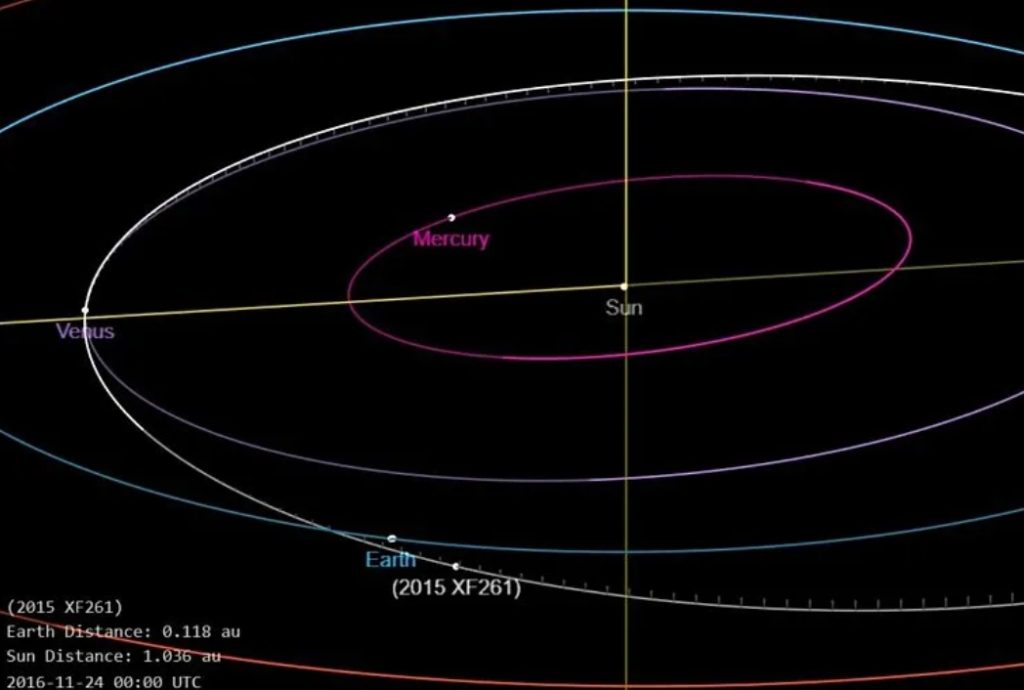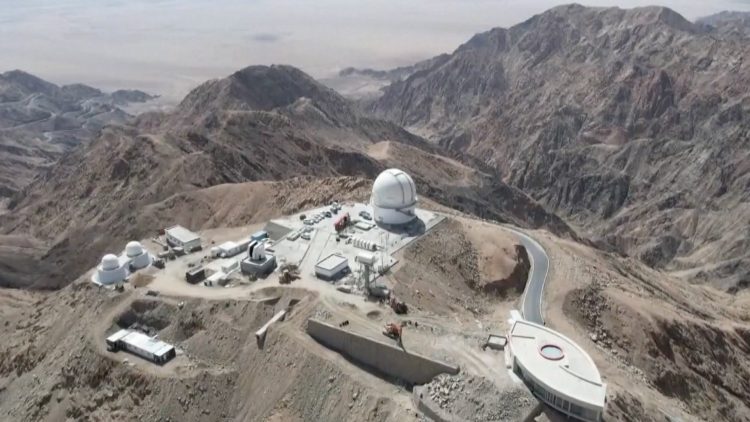1. Introduction
Planetary defense is a critical aspect of modern space science, addressing the need to protect Earth from potential impacts by asteroids and comets. As space agencies around the world work on strategies to mitigate these cosmic threats, China has announced its plans to undertake its first planetary defense test mission. This initiative reflects China’s growing capabilities and ambitions in space exploration and planetary science. This article provides a comprehensive examination of China’s planetary defense test mission, exploring its objectives, technologies, potential impact, and the broader implications for global space safety.
2. The Importance of Planetary Defense
2.1 Understanding Planetary Defense
Planetary defense involves strategies and technologies designed to detect, track, and mitigate the risks posed by near-Earth objects (NEOs), such as asteroids and comets, that could potentially impact Earth. The primary goals of planetary defense are:
- Detection: Identifying and tracking NEOs to assess their potential threat.
- Mitigation: Developing methods to prevent or reduce the impact of a potential collision.
- Preparedness: Creating plans and systems to respond to potential impact scenarios.
2.2 Historical Context and Examples
Historically, significant impacts by asteroids and comets have had profound effects on Earth:
- Tunguska Event (1908): An explosion in Siberia, believed to be caused by an asteroid or comet, flattened over 2,000 square kilometers of forest.
- Chicxulub Impact (66 million years ago): The impact of a large asteroid is linked to the mass extinction event that led to the demise of the dinosaurs.
These events underscore the importance of planetary defense and the need for proactive measures to safeguard our planet.
3. China’s Planetary Defense Test Mission
3.1 Mission Objectives
China’s upcoming planetary defense test mission aims to:
- Test Mitigation Technologies: Evaluate the effectiveness of new technologies designed to alter the trajectory of an asteroid or comet.
- Enhance Detection Capabilities: Improve China’s ability to detect and track NEOs.
- Demonstrate Technological Innovation: Showcase China’s advancements in space technology and its commitment to planetary defense.
3.2 Mission Details
3.2.1 Spacecraft and Technology
The mission will involve:
- Spacecraft Design: Developing and deploying a spacecraft equipped with the necessary technology to impact or divert a target NEO.
- Impact Mechanism: Utilizing impactor technology to test the feasibility of altering the trajectory of an asteroid or comet.
- Tracking Systems: Implementing tracking systems to monitor the mission’s progress and assess the impact on the target NEO.
3.2.2 Timeline and Milestones
The mission timeline includes several key milestones:
- Launch: The spacecraft will be launched aboard a Chinese rocket, with the timing and specific launch vehicle to be determined.
- Trajectory Correction: During its journey, the spacecraft will perform trajectory corrections to ensure it reaches the target NEO.
- Impact Test: The spacecraft will execute the impact test, aiming to alter the NEO’s trajectory and gather data on the effectiveness of the mitigation strategy.
4. Technological Innovations and Strategies
4.1 Impactor Technology
Impactor technology is central to the mission’s objectives:
- Kinetic Impactor: A spacecraft designed to collide with the target NEO at high velocity, transferring kinetic energy to alter its trajectory.
- Blast Impact: Assessing the effectiveness of different impactor designs and impact velocities in achieving the desired trajectory change.
4.2 Advanced Detection and Tracking
Improving detection and tracking capabilities involves:
- Ground-Based Observatories: Utilizing telescopes and other ground-based instruments to monitor NEOs and track their orbits.
- Space-Based Observatories: Deploying space telescopes to detect and track NEOs from space, providing complementary data to ground-based observations.
4.3 Data Analysis and Modeling
Data analysis and modeling are crucial for assessing the mission’s success:
- Trajectory Analysis: Analyzing the changes in the NEO’s trajectory post-impact to determine the effectiveness of the mitigation strategy.
- Impact Modeling: Using computer models to simulate the impact and assess its potential effects on the target NEO.

5. Global Implications and Collaborations
5.1 Enhancing Global Planetary Defense
China’s mission has significant implications for global planetary defense:
- International Collaboration: Potential for collaboration with other space agencies and organizations to share data, technologies, and strategies for planetary defense.
- Global Coordination: Coordinating efforts to address potential threats from NEOs and develop comprehensive planetary defense strategies.
5.2 Addressing Potential Threats
Effective planetary defense requires a global approach:
- Threat Assessment: Collaborating on threat assessments and risk evaluations to prioritize NEOs based on their potential impact risk.
- Mitigation Strategies: Developing and implementing global mitigation strategies to address potential impact scenarios and reduce risks.
5.3 Promoting Space Policy and Research
China’s mission will contribute to space policy and research:
- Policy Development: Influencing international space policy and guidelines related to planetary defense and NEO mitigation.
- Research Advancements: Driving research and innovation in space technology and planetary science.
6. Challenges and Considerations
6.1 Technical Challenges
The mission faces several technical challenges:
- Precision Targeting: Ensuring the spacecraft accurately targets and impacts the intended NEO.
- Technological Integration: Integrating various technologies and systems to achieve mission objectives and gather reliable data.
6.2 Ethical and Legal Considerations
Addressing ethical and legal considerations involves:
- Impact on Space Debris: Managing the potential creation of space debris and its impact on other space missions and satellites.
- International Agreements: Adhering to international agreements and protocols related to space exploration and planetary defense.
6.3 Long-Term Impact
The long-term impact of the mission includes:
- Ongoing Monitoring: Continuously monitoring and assessing the results of the mission to inform future planetary defense strategies.
- Public Awareness: Increasing public awareness and understanding of planetary defense and the importance of safeguarding Earth from cosmic threats.
7. Future Directions and Opportunities
7.1 Advancing Planetary Defense Technology
Future advancements in planetary defense technology will focus on:
- Enhanced Impactors: Developing more sophisticated impactor technologies to improve the effectiveness of trajectory alteration.
- Novel Mitigation Strategies: Exploring alternative mitigation strategies, such as gravity tractors or nuclear deflection, to address a wider range of potential threats.
7.2 Expanding International Collaboration
Expanding international collaboration will involve:
- Global Initiatives: Participating in global initiatives and forums dedicated to planetary defense and NEO mitigation.
- Shared Resources: Sharing resources, data, and expertise among space agencies and organizations to enhance collective efforts in planetary defense.
7.3 Promoting Research and Innovation
Promoting research and innovation will include:
- Funding and Support: Securing funding and support for research projects and technological development related to planetary defense.
- Educational Programs: Supporting educational programs and outreach initiatives to inspire and engage the next generation of space scientists and engineers.
8. Conclusion
China’s first planetary defense test mission represents a significant step forward in the field of space exploration and planetary defense. By developing and testing new technologies to mitigate the risks posed by near-Earth objects, China is contributing to global efforts to safeguard Earth from potential cosmic threats. The mission’s objectives, technological innovations, and broader implications underscore the importance of international collaboration and continued research in planetary defense. As we chart the course for discovery and address the challenges of space exploration, China’s efforts highlight the growing capabilities and ambitions of the global space community in protecting our planet and advancing our understanding of the cosmos.


















































Discussion about this post